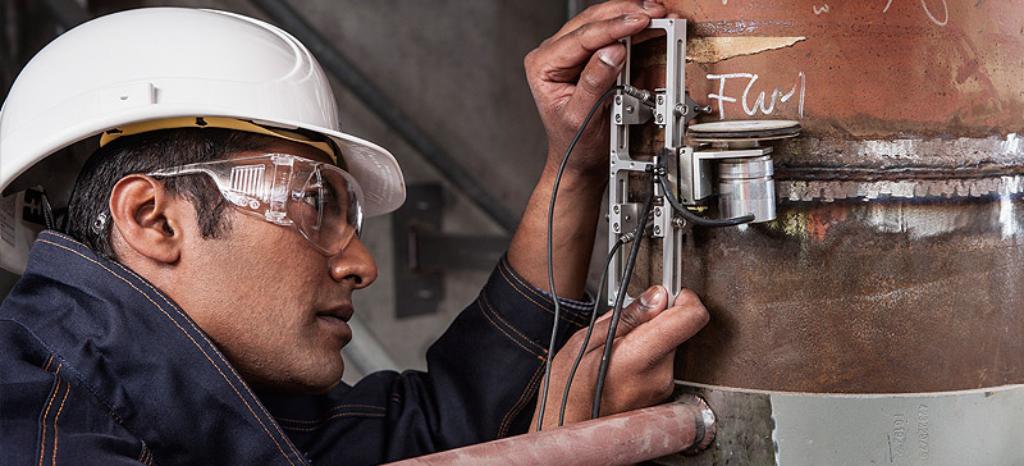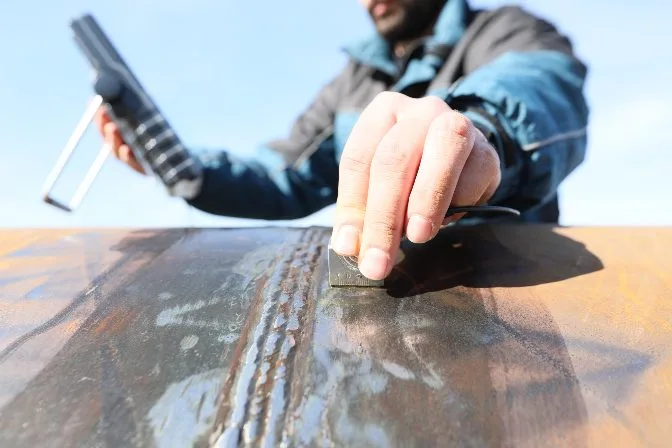Specialist Houston Welding Inspection to Meet Market Rules
Specialist Houston Welding Inspection to Meet Market Rules
Blog Article
Discovering the Basics of Welding Examination: A Comprehensive Exam of Processes, Tools, and the Relevance of Quality Assurance in Welding Industries
Welding inspection offers as a foundation in the maintenance of safety and security and structural integrity across various markets. Understanding the implications of these techniques raises important concerns regarding their effectiveness and the future instructions of high quality assurance in welding.
Relevance of Welding Evaluation
Welding assessment plays an essential role in ensuring the integrity and security of welded structures. It acts as a methodical method to evaluating weld top quality, determining prospective issues, and making sure conformity with established requirements and specifications. The importance of welding assessment expands past mere adherence to regulations; it is essential in securing human lives and safeguarding financial investments in facilities.
Faulty welds can result in devastating failures, resulting in considerable financial losses, injury, or death. Strenuous inspection processes are vital to detect issues such as inadequate penetration, porosity, or splits prior to they escalate into crucial failures. Additionally, effective welding examination adds to the total efficiency and durability of frameworks, ensuring that they can withstand the conditions for which they were designed.
In addition, the implementation of welding examination promotes a culture of top quality and accountability within the welding industry. By focusing on examination, organizations show their commitment to quality, therefore improving their reputation and competition in the market. Inevitably, welding examination is not merely a procedural step yet a basic component of design honesty and security guarantee, essential for the effective implementation of welding projects across different fields.
Secret Inspection Processes
A detailed approach to welding inspection involves numerous key processes that are crucial for making certain weld top quality and architectural stability. The very first crucial procedure is aesthetic inspection, which enables inspectors to identify surface area issues such as splits, porosity, and improper grain appearance. This approach offers as an initial examination to make sure that the weld fulfills specified requirements.

Additionally, destructive screening may be done on example welds to analyze their mechanical properties and performance under tension. This procedure involves tiredness, effect, and tensile testing to verify that the weld can stand up to functional conditions.
Finally, documentation and reporting are important elements of the examination process. Maintaining accurate records of inspections, monitorings, and test results helps make sure conformity with industry criteria and promotes regular enhancement in welding practices. Collectively, these crucial procedures develop the foundation of reliable welding evaluation and high quality assurance.
Tools for Weld Examination
Numerous devices are important for efficient weld assessment, each developed to analyze different aspects of weld top quality and efficiency. Amongst the most commonly made use of are visual inspection tools, including magnifying glasses and borescopes, which make it possible for assessors to identify surface problems such as splits, porosity, and incorrect fusion.
In addition, ultrasonic testing (UT) equipment is important for spotting inner defects. This device employs high-frequency acoustic waves to disclose interruptions within the weld, making certain the stability of the product. Radiographic testing (RT) tools, which make use of X-rays or gamma rays, likewise give understanding right check into the inner structure of welds, permitting the recognition of incorporations or gaps.
For accurate measurements, calipers and assesses play a considerable role in ensuring and figuring out weld measurements adherence to defined resistances. Firmness testers assess the mechanical residential or commercial properties of the weld, guaranteeing it satisfies efficiency criteria.

Techniques for Analyzing Quality
How can the top quality of welds be dependably evaluated? A variety of strategies are used to evaluate weld honesty and make sure adherence to specified requirements. Aesthetic evaluation is the most fundamental method, permitting assessors to recognize surface defects such as fractures, porosity, or damaging. This non-destructive strategy functions as a preliminary evaluation before advanced approaches are used.
Ultrasonic screening (UT) is another noticeable technique that uses high-frequency acoustic waves to discover inner defects within the weld. Houston Welding Inspection. This technique offers a comprehensive view of the weld's integrity without jeopardizing its structural integrity. On top of that, radiographic screening (RT) uses X-rays or gamma rays to disclose interior flaws, using in-depth insights right into weld high quality
Magnetic fragment screening (MT) is efficient for detecting surface area and near-surface gaps in ferromagnetic materials, making use of electromagnetic fields and colored particles to highlight problems. Color penetrant screening (PT) can be employed to reveal surface-breaking imperfections by using a color that seeps right into splits and is consequently exposed.
Compliance With Sector Standards
Compliance with market standards is vital for ensuring the quality and security of bonded frameworks. These requirements, established by companies such as the American Welding Society (AWS) and the American National Criteria Institute (ANSI), provide standards that control the welding process, materials, and examination procedures. Complying with these criteria not only makes certain the structural stability of welds yet likewise mitigates threats related to failings that could result in catastrophic effects.

Welding inspectors are charged with verifying compliance with these standards throughout the welding process (Houston Welding Inspection). This involves examining welding procedures, keeping track of welder credentials, and carrying out complete evaluations of the end product. Non-compliance can cause substantial monetary consequences, project delays, and damages to a business's get redirected here online reputation
Normal training and updates on requirements are essential to maintain workers informed and proficient, ensuring that all aspects of welding procedures satisfy or go beyond regulative demands. Ultimately, commitment to market requirements serves as a structure for quality in the welding sector, advertising safety and dependability in bonded structures.

Final Thought
Finally, welding assessment functions as a critical component in keeping the safety and stability of welded frameworks. Through the execution of crucial assessment procedures and the use of advanced tools and techniques, prospective issues can be determined and addressed properly. Adherence to sector criteria makes sure conformity and promotes a culture of high quality within the welding market. Eventually, extensive inspection techniques not just safeguard human lives but likewise boost the sturdiness and performance of bonded buildings.
Moreover, the application try here of welding assessment promotes a culture of top quality and accountability within the welding sector. Ultimately, welding evaluation is not merely a step-by-step action yet a fundamental component of engineering integrity and security assurance, important for the effective execution of welding projects throughout numerous fields.
A thorough technique to welding inspection entails a number of key processes that are essential for making certain weld quality and architectural integrity. These criteria, developed by companies such as the American Welding Culture (AWS) and the American National Specification Institute (ANSI), provide standards that regulate the welding procedure, products, and evaluation protocols.Welding inspectors are charged with confirming conformity with these criteria throughout the welding procedure.
Report this page